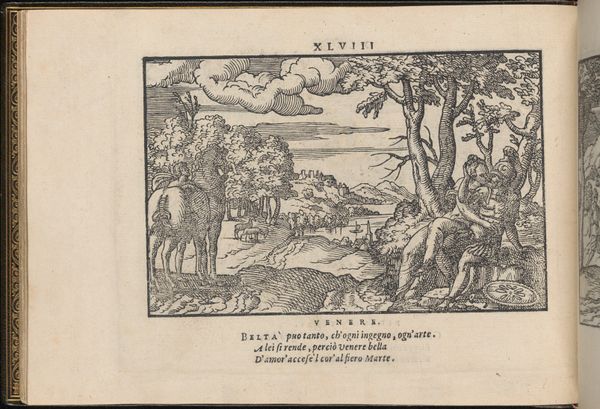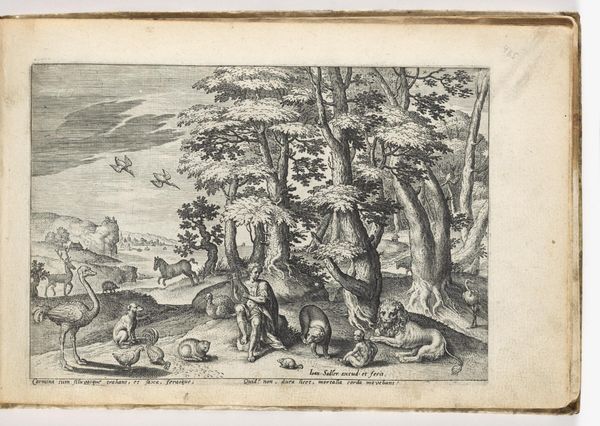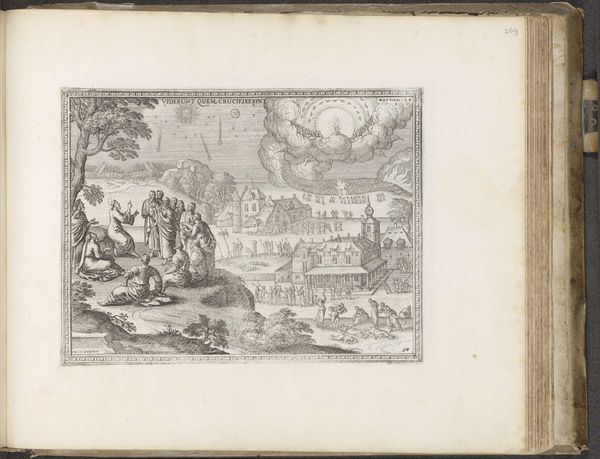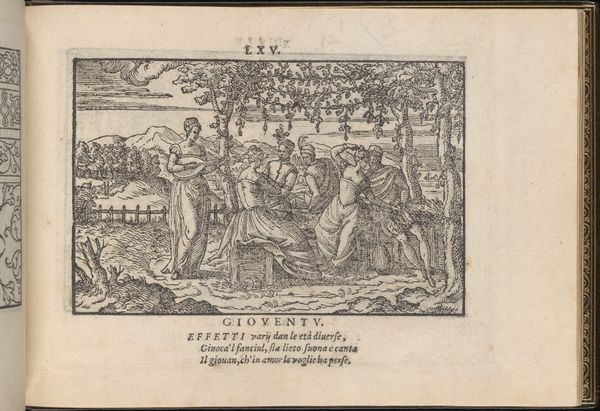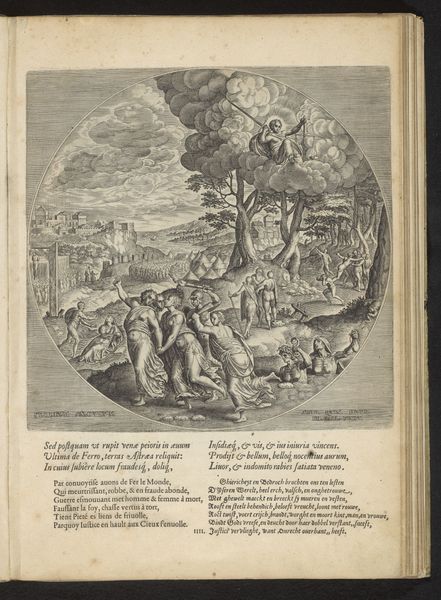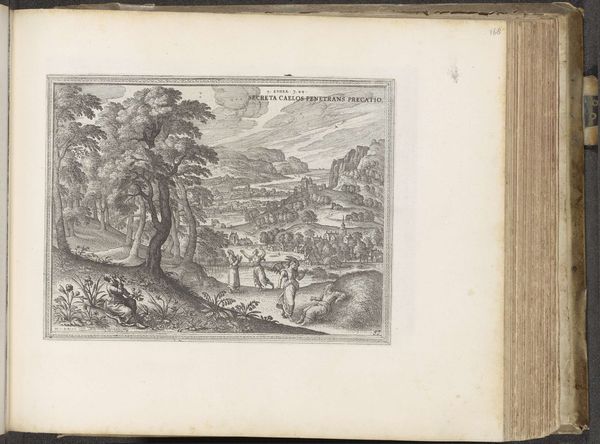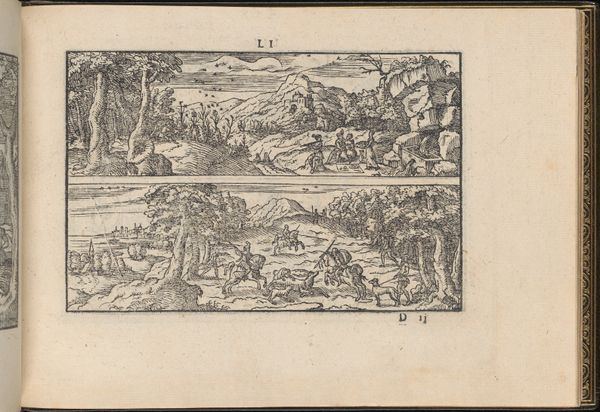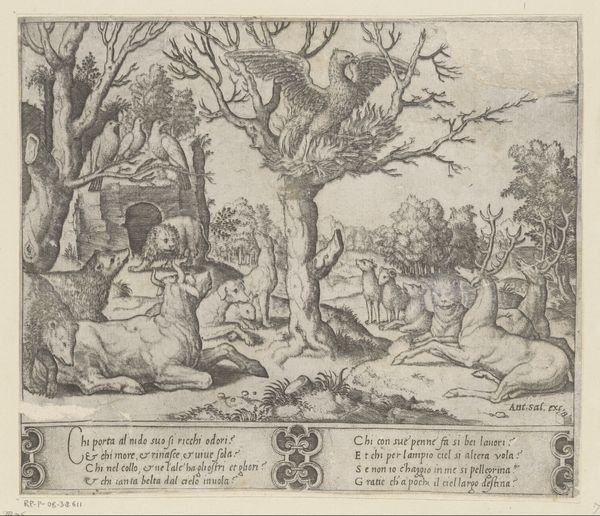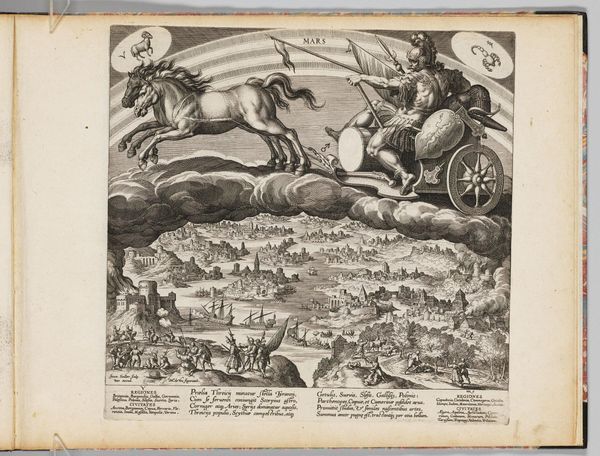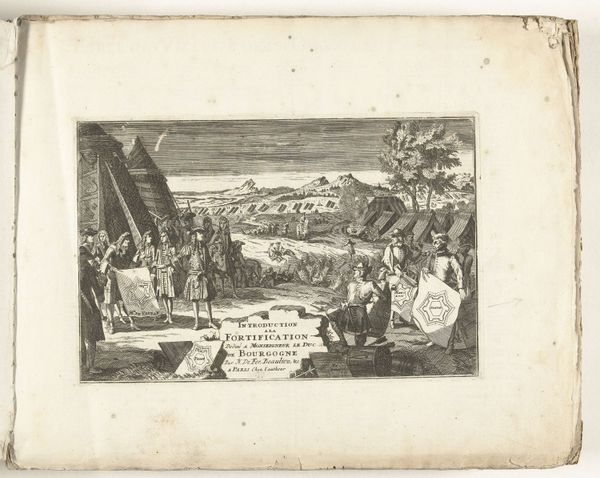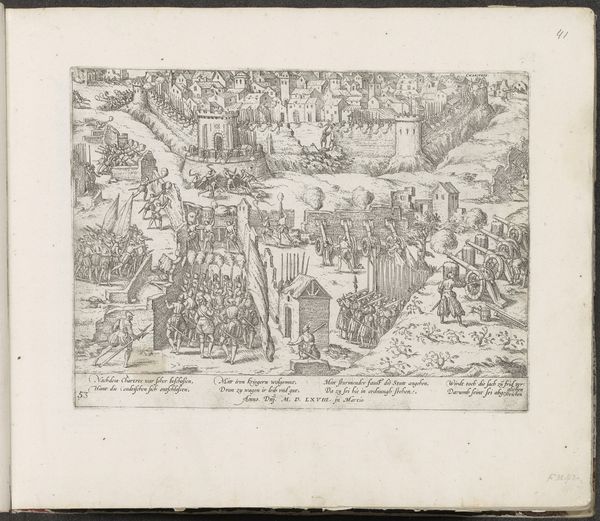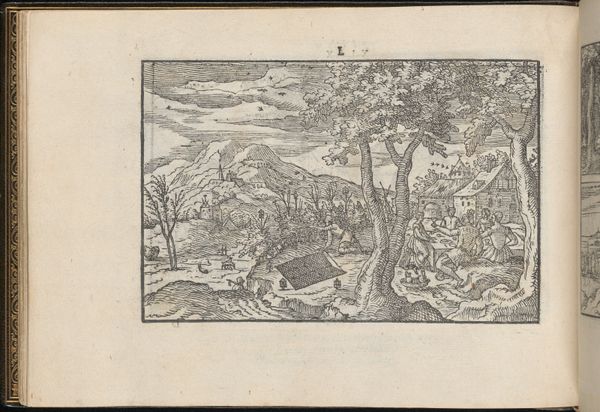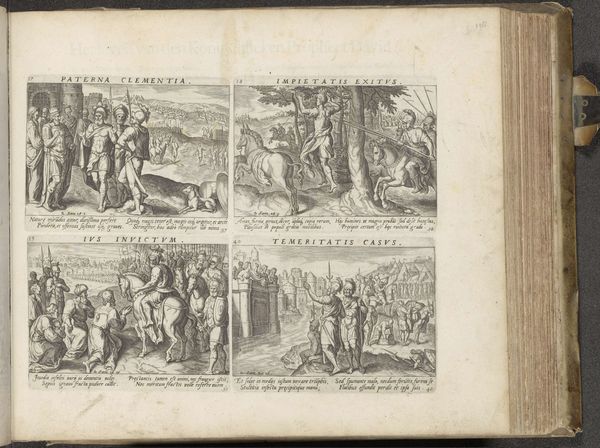
La Vera Perfettione del Disegno di varie sorti di recami, page 24 (recto) 1567
0:00
0:00
drawing, print, engraving
#
drawing
# print
#
landscape
#
figuration
#
history-painting
#
italian-renaissance
#
engraving
Dimensions: Overall: 6 5/16 x 8 7/16 in. (16 x 21.5 cm)
Copyright: Public Domain
Curator: Giovanni Ostaus created this engraving titled "La Vera Perfettione del Disegno di varie sorti di recami, page 24 (recto)" in 1567, currently held in the collection of the Metropolitan Museum of Art. Editor: What strikes me first is the sharp contrast of light and shadow; the figures emerge starkly against the softer landscape, it seems tragic. Curator: This is part of a series intended to provide models for embroidery, thus the clear outlines, which could be easily transferred to fabric. The Italian Renaissance emphasis on disegno, or design, elevates the act of drawing and sets the stage for crafting useful patterns for clothing and household textiles, empowering makers across social strata. Editor: The composition is carefully staged. The female figure dominates the center, her posture expressing some high drama with outstretched arms, and her drapery seemingly agitated in the air as if propelled by violent grief. Below her to the right a body lays in agony. Are those marks suggesting blood? The eye leaps across the composition from these visual clues! Curator: That's right! Ostaus depicts Pyramus and Thisbe, tragic lovers from Ovid's "Metamorphoses." Their forbidden love, clandestine meeting, and ultimately their suicides fuel a narrative about societal constraints placed on youth and desire. You see here, Thisbe is finding the body of Pyramus. Editor: Yes, the figures feel rooted within a very constructed landscape, see that sculptural fountain. How can a single, linear technique deliver so much three-dimensionality? Ostaus employs incredibly economic hatching techniques throughout— it's amazing what can be suggested by tiny, close and far lines. Curator: Consider the wider distribution of such prints. They shaped visual culture for ordinary artisans but also spread classical themes beyond scholarly circles. Through such engravings, classical narratives, once restricted to the elite, became accessible. The politics of imagery shifts significantly when disseminated through reproductive prints. Editor: What an intricate and emotive scene for an embroidery pattern! A tragic statement rendered delicately! Curator: Indeed! By intertwining practical application with artful narrative, Ostaus effectively blurs lines between function, form, and dissemination.
Comments
No comments
Be the first to comment and join the conversation on the ultimate creative platform.
